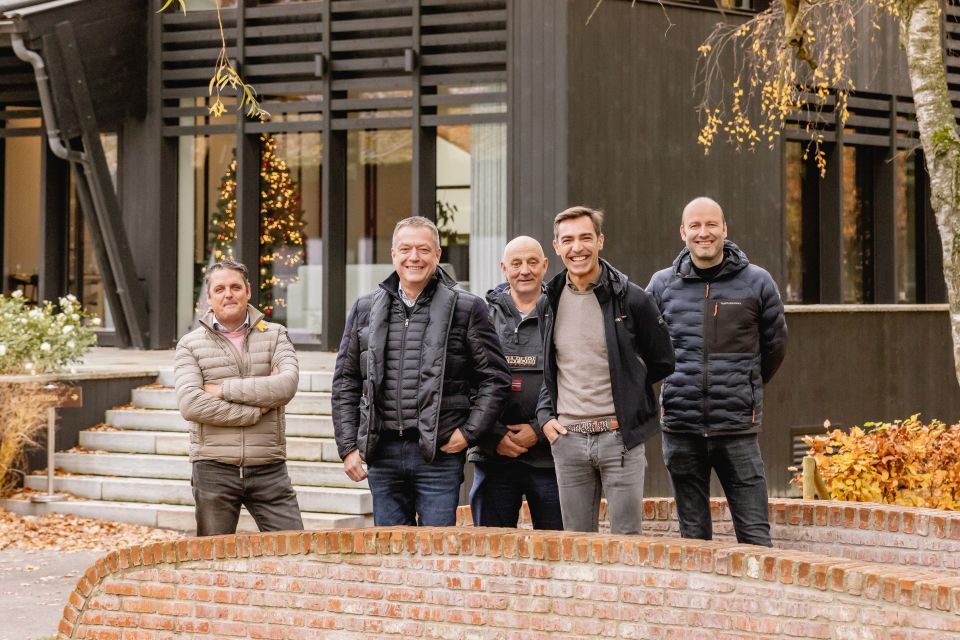27 March '24
About stallions: for, during and after the stallion inspection
/
Breeders Portrait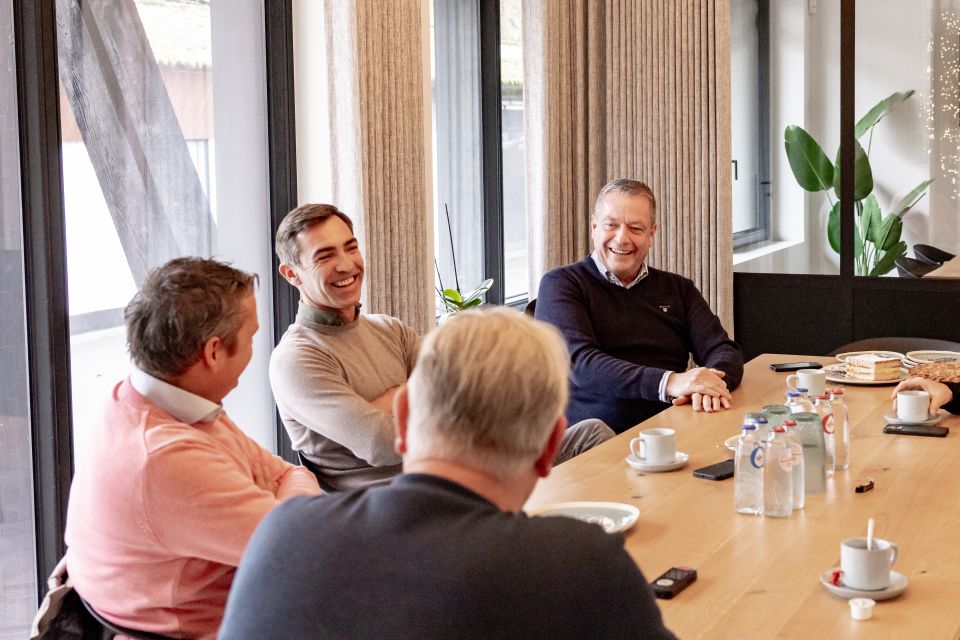
@luana
The next major event of 2024 is indisputably ‘The Zangersheide International’ (14-18 February), a combination of sport (CSI 4*) and breeding (Zangersheide Stallion Inspection). We would like to take a closer look at the run-up to the stallion inspection. Who are those young stallions? Where do they come from? How do they get selected and get their education? In other words, what is the trajectory from colt foal to approved stud stallion?
So we invited a few hands-on experts to our discussion table: Willem Van Hoof is a professional presenter of stallions at the stallion inspection, Danny Nijs is the breeder of Stal de Nyze and has already presented a number of stallions to the Jury. Luc Tilleman is a Jury member who assesses the stallions and Stijn van Campenhout sits at that same Jury table in his capacity of Studbook Zangersheide representative. Then there is Filip Vandenberghe from Animal Clinic de Bosdreef, a member of the veterinary committee of the Z-Inspection.
At inspections Willem Van Hoof finds himself in the direct presence of the Jury. Willem is a professional presenter of stallions and a regular client at the Zangersheide stallion inspections. Piergiorgio Bucci’s Casallo Z and Casago, Leopold van Asten’s VDL Groep Zidane and Harrie Smolders’ Escape Z are just some of his credentials. Last year he presented seven stallions at the Z-Inspection and six of those were approved. ‘That certainly doesn’t happen every year’, Willem laughs.
We know Danny Nijs from Landon (ex. Crack de Nyze Z), according to the FEI-Ranking the second-best horse in the world. On number one we find Simon Delestre’s Dexter Fontenis Z. So that’s two Z horses featuring in place one and two!
Since most of his work takes place behind the scenes, we ask everyone if they know Filip Vandenberghe?
‘Unfortunately yes, from his invoices’, Luc Tilleman laughs, The tone has been set.
Luc Tilleman has been a member of the Stallion Inspection Jury for many years. Luc: ‘There’s no need to make things more complicated than necessary, we see what we see and judge it. Our judging is done in all loyalty and conscience, without bias. Afterwards everyone is welcome for a more detailed explanation. That happens quite often and then we painstakingly explain why a specific stallion was not accepted.’
Stijn: ‘It’s a good thing that the outcome of the inspection can be discussed with the Jury. This opens a window to explain what we expect of an approved stallion and why this particular stallion did not meet the expectations.’
To me it’s a crack of a horse: but in America the word crack is associated with drugs.
These days Crack de Nyze Z goes by the name of Landon. Danny: ‘That’s a bit awkward, I’d rather they’d stick to his original name.’
Luc agrees: ‘Such a change of name should not be allowed, we owe breeders that kind of respect.’
Danny: ‘I can understand it though. To me he is a crack of a horse but in America the word crack is associated with drugs.’
Let’s start at the beginning. Do breeders prefer filly foals?
Danny: ‘That depends on what your plans for the foal are. These days a filly foal usually realises a higher price at auctions.’
Luc: ‘In this respect things have taken a U-turn. Fifteen years ago colt foals were in great demand, these days it’s filly foals. I breed between fifteen and twenty foals per year and therefore prefer fillies. Obviously, for the continuation of my breeding programme, plus it’s a more marketable strategy. When a person buys a horse for the sport it means they can also breed with them later on. Or sooner, if the mare can no longer be active in the sport due to an injury.’
Willem: ‘We breed around fifteen foals a year and like to see them grow up and mature. It’s the same to me because we don’t go to auctions anyway.’
Stijn: ‘My grandfather breeds some five foals every year. I have inherited my passion for horses from him. At Woodlands we breed only sporadically, we prefer buying youngsters. If we are in a position to buy an exceptional horse then we have no preference for either a stallion or mare.’
Filip: ‘My father passed away ten years ago and he used to breed three foals a year for his children. It was my task to introduce them to the saddle and I rode them up to 1.20m level. I was not, shall we say, a very talented sport rider but I loved schooling them.’
Luc: ‘I love all my horses, irrespective of talent. I find it annoying when riders blame their horses for dropping a pole, I really cannot stand that. Horses give us their best. Not every person is born with the same talent, now does that imply that a less-talented person deserves a kick in the pants?’
Filip: ‘The bottom line is that we have all chosen a life with horses because the connection we feel with them is so unique. Then it follows that our interaction with them should be based on respect.’
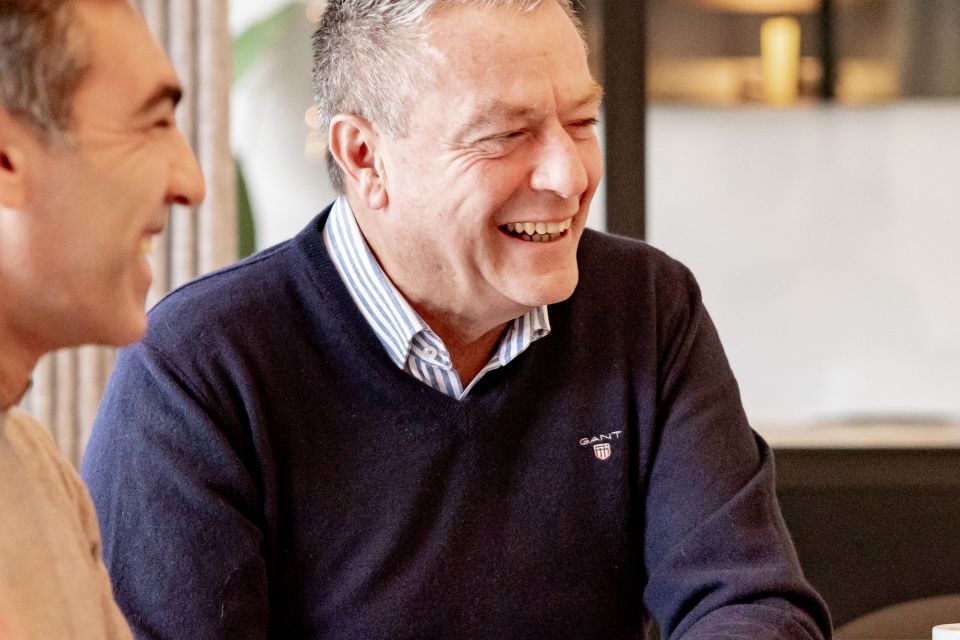
The more exercise the better
The panel’s love for horses is greater than the preference for either of the sexes, but do they also get the same treatment?
Luc: ‘The more exercise and the longer in a herd the better. That is the fundamental principle for every horse. During the first year the colts can stay in the field together with the fillies, but as soon as they turn one they have to be separated. The herd is essential for their basic upbringing. Earlier we were referring to respect towards horses. Horses learn the meaning of respect in the herd.’
Danny: ‘That’s exactly what I had to do with Crack de Nyze Z. He was like a lion and in the herd he learned what his place was. That was not without risk but he left me no choice. People urge me to breed another Crack, but I’m not quite sure about that because I know his value and the last thing I want is an accident. That’s a difficult choice to make.’
Luc: ‘I don’t make that distinction, no matter whether the foal’s value is € 4,000 or € 20,000, as a horse in the herd they are all just as dear to me. The worst thing to do would be to keep an expensive foal indoors and put it in a glass cage. The only one to benefit from that would be Filip.’
Foals need to grow up in a herd because the herd provides exercise
Filip: ‘Too right. Foals and youngsters need as much free exercise as possible and there is a lot of scientific research to back that up. Foals are very much a finished product at birth but not entirely, the process of ossification still has to be completed. Exercise is the ingredient needed to achieve ossification and to prepare the skeleton for future physical strain. If, for whatever reason, foals only move to eat and drink and other than that are kept indoors, then the skeleton won’t be programmed to deal with future exercise/physical strain. A paddock provides insufficient space for foals, they have to grow up in a herd because the herd forces them to move.’
Luc: ‘Horses in their natural habitat walk up to twelve kilometres a day. How many kilometres do the majority of young horses actually move? We still see too many horses living in restricted spaces that are too small.’
Willem: ‘My foals usually stay outdoors until they are 2½ years old. The colts that I consider to be candidates for presentation at a stallion inspection are brought in sooner, so that they can be adequately prepared for the autumn inspection. Colts that are not ready yet stay outdoors for a longer period and will be presented at the next spring inspection.’
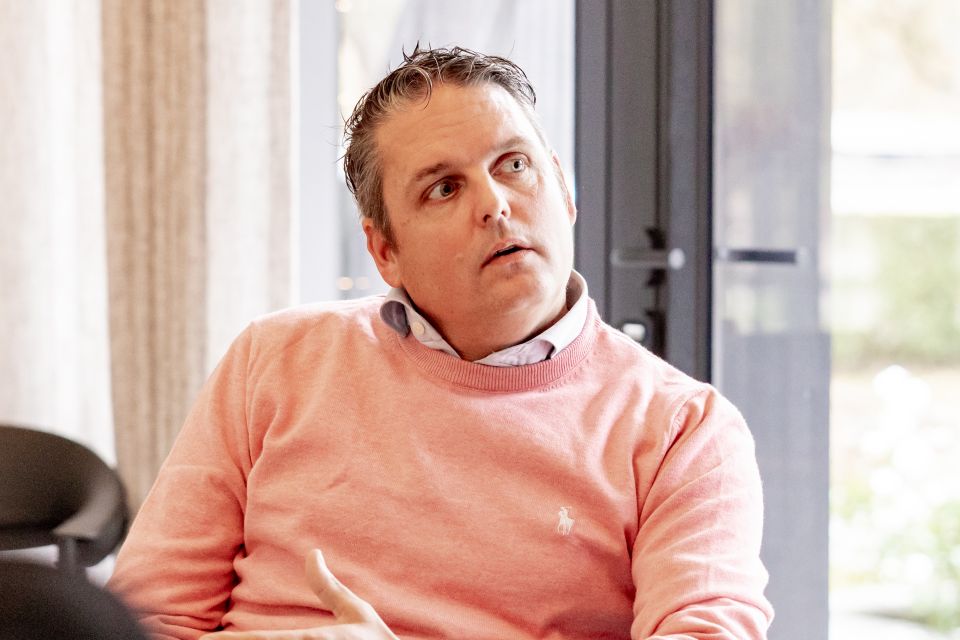
Quite frankly, I presented Crack for my own pleasure
Before a colt becomes a candidate you have to decide if and why the colt stays an entire or is going to be gelded, right?
Luc: ‘At home we have about twelve young stallions from which two, at maximum three will go to the stallion inspection. We have to be as strict and critical as we can be. There are enough stallions and it’s key that only the best are presented.’
Crack de Nyze Z was a stallion but has now been gelded? Danny answers in a matter-of-fact way: ‘Well, the Jury didn’t accept him at the Z-Inspection. And Luc was there to see it happen (laughs).’
Luc: ‘At that moment he hardly looked the part of a sire, did he?’
Danny: ‘I know. And we could hardly do it for the dam either. Quite frankly, I presented Crack for my own pleasure. You see, it was my son Jens who presented him under saddle as a 4-year-old.’
Stijn: ‘I’m hearing a number of good arguments. You breed a horse, like the sight of him and believe in it? Then you need to give him a chance. What I’ve also learned in the process is to take it with grace when my horse didn’t get approved.’
Danny: ‘I could understand the Jury’s decision. Compared to six years ago Crack is a different horse, he has fully matured by now.’
Luc: ‘The Jury can only assess in the moment, but that is no devaluation of a horse’s potential qualities. Horses are a passion and it’s a person’s belief and perseverance that moves mountains. The Jury cannot and shouldn’t have any influence on that. People map out a path for their stallion and the inspection is a tiny dot on that timeline. The next day it’s business as usual, irrespective of the Jury’s judgement.’
Willem: ‘I have the same approach. There are many benchmarks in a stallion’s life. The inspection is one of them, no more and no less. Just consider what Crack has achieved by now!?’
Danny: ‘And maybe Crack wouldn’t be the horse he is now if he had stayed an entire?’
Luc: ‘Niels Bruynseels’ Delux van T&L is another fine example. I castrated him when he was a 2½-year-old because he was too much the stallion. But Delux has become a world-class horse. If he had remained a stallion, who knows, he might have turned into that troublemaker who always baulks in the corner. With stallions it’s important not to underestimate their need for skilled and professional handlers.’
Stijn: ‘I used to present multiple stallions. I was very passionate about it for a while until I came to realise that rigorous selection can also be done at home. And then you have to ask yourself the question if you are prepared to invest time and money in the preparations and the presentation.’
A stallion inspection is essential for many breeders because they hope to reach clients via that route
Luc: ‘Don’t forget that preparing and schooling your stallion takes four to five months and so expenses easily pile up.’
Willem: ‘I’ve been doing it from way back and every year about fifteen stallions come to me from virtually all over. A stallion inspection is essential for many breeders because they hope to reach clients via that route, and it often works.’
Luc: ‘A stallion inspection is the ideal platform to sell. The candidates are healthy and beforehand were selected on sport qualities. After all, people don’t just take any stallion to the inspection. They already have a sound basis and I reckon that in itself is a thorough selection for purchasing a sport horse. For those who aren’t keen to run a stallion there’s always the possibility to opt for castration.’
Willem: ‘I fully support that. I don’t have a glass bowl but when a stallion comes to my place I also vent my opinion. And that’s after the client made his selection. So by then the candidate stud stallion has already been judged several times.’
And then the Jury is going to step in to pass their judgement. How difficult is that and do you recognise which stallions have to work extra hard?
Luc: ‘We assess what we see in that snapshot in time. In terms of assessing natural aptitude it’s pretty straightforward. A stallion inspection is like an exam and everyone has to study for exams. However, no cheating is allowed during the exam. When you get caught you are thrown out. A good listener knows what I mean.’
Willem: ‘I find that a positive evolution. Before, the stallions had to jump to the extreme. Luckily everybody, or almost everybody, has abandoned that idea.’
A dropped pole is not a problem. It’s the reaction after the mistake that counts
Stijn: ‘Horsemen and horsewomen have no problem reading their horses. Look for instance at what the horses are saying with their ears, you can read so much in that. A dropped pole is no problem, the reaction after that mistake is far more important.’
Willem: ‘Thinking and evolving is an ongoing process. Contemporary stallion inspections are a lot fairer for all people involved.’
Danny: ‘And a good-quality horse has no need for cheating.’
But before all that the stallions have to undergo medical screening. Even before they jump in freedom.
Filip: Starting-point is to get a total and global picture of your breeding, including sport performance in combination with conformation and health. All those aspects are of equal merit and must be taken into account. Vice versa it would be wrong to solely consider performances or only health. For stallion inspections the demarcation line is clear genetic disorders, although that too is subject to evolution. Hence I’m an advocate of a liberal and evolutionary approach to interpreting merely medical aspects. Like the interpretation of a fragment in the navicular bone. This always used to be a no go and heralded the inexorable rejection of a stallion. After twenty years of practical experience we know that we have to interpret those fragments with a bit more nuance. A perfect navicular bone with a tiny fragment is not going to restrict a sport horse. In other words, that should be incorporated in the overall picture of the stallion. Successful stallions in the sport are also successful stallions in breeding and that should be the criterion for the medical screening. As a sport horse studbook that is the line Zangersheide has adopted and we see that many other studbooks are following suit.’
‘For an interpretation we need to dare trust the figures. I graduated twenty-one years ago and have witnessed several evolutions. Classic radiographic navicular disease for instance, has virtually disappeared over the past two decades. The figures are moving in the right direction. Over that same period we see that the occurrence of OCDs, about 30% to 35% of the population, remains the same. That figure has not gone down, partly because there are no closed studbooks. Holstein for example didn’t take photos of the knees for a long time. That was at the time when this already used to be the standard at Zangersheide.’
Pragmatic approach of an inspection
Filip Vandenberghe: ‘Z stands for excellent quality and a high-performance sport horse. That implies that we adhere to strict assessment of health aspects which we know to hinder (top) sports. Then I’m thinking of i.e. OCD in the knee, bad cases of navicular disease, club feet, a-symmetrical stance, and so on. Scientific research has shown that in the long run certain conformations cause problems in the sport. For example a very steep, straight hind leg. Or a leg that has sagged too much in the fetlock joint. Such horses are much more prone to wear and tear because they develop ligament issues. Sickle-hocked horses sooner develop wear and tear on the underside of the hock. The examples listed above all affect conformation and there is a hereditary component to it.
One of the quality aspects of the Z-Inspection is the close connection between the assessment of medical, exterior and jumping qualities. We have to evolve towards a correct evaluation of functional health. We are simply nowhere with healthy horses that cannot jump. Just like we are nowhere with good jumpers that aren’t healthy.’
Luc: ‘In the past ten years as a Jury member I have learned so much thanks to consultations with Filip and the veterinary committee. Irrespective of medical imaging I would like to use this opportunity to point out to breeders that they should keep paying attention to the correctness of stance in their horses.’
Filip: ‘This doesn’t always show up in X-rays, unless it’s an extreme deviation. Correct stance is vital. Surely, occasionally there will be a horse that performs excellently in spite of a deviation in stance, but that can never be a starting point for the breeding policy of any studbook.’
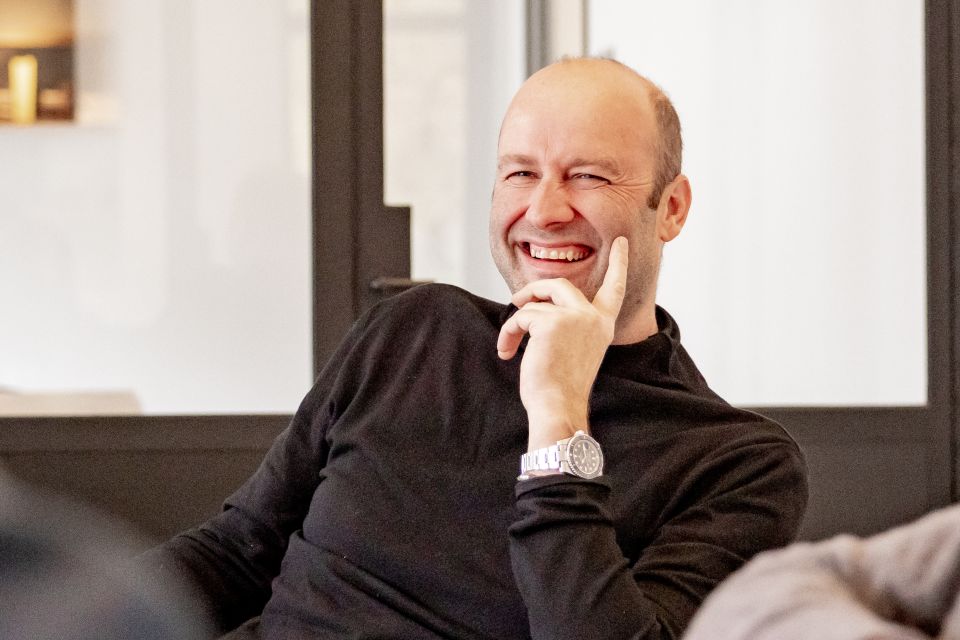
A candidate stud stallion enters his schooling trajectory from scratch. Isn’t there the risk of overtaxing?
Willem: ‘Certainly, which is why we give it four to five months.’
Luc: ‘Compare it to ‘Start to Run’. People who decide to pick up jogging and start from scratch follow a programme that works towards a systematic build-up of condition. No one starts by running ten kilometres, it takes months to get there. Working with horses is very labour intensive and good work requires skilled people who know what to do and when to do it. This is how it works in every phase, from foal to sport horse.’
Willem: ‘Still too often I’m dismayed when seeing some of the presented stallions. Their general condition is not always what it should be. So where to start? But it’s more like a non-starter. They first need to get in shape.’
Luc: ‘My horses are turned out on a basis of two horses per hectare and they get extra feeds starting in August. I’m not going to wait until I can see that they are in need of extra feeds. Although I don’t fatten them up too much either. And we cannot say often enough that exercise is absolute key. Even when a foal sold well at auction, it still needs sufficient exercise from the point of sale until the moment of delivery. That is absolutely essential for its later growth and development.’
It takes more than good genes
Willem: ‘I see that a lot. Sometimes owners have purchased an expensive embryo. As yet they have never even seen it, neither at birth nor during its growing-up phase. Then they bring that horse to me to prime it for the stallion inspection. But genetics isn’t the only factor that determines a good horse, there are also the horse’s condition and conformation as well as the radiological findings that are of influence. People purchase embryos or foals and tend to develop high expectations because of the investment. But it’s not exact science.’
Stijn: ‘Many presenters are aware of a stud stallion’s commercial value. However, from the moment when the horse comes under saddle expenses start to rise. Therefore many breeders choose to sell their stallion before that time and stallion inspections make a fine platform.’
Willem: ‘Owners shouldn’t forget either that the status of stud stallion offers no guarantee for stud services. Most of them don't or hardly get to do stud services. Consider the horse world: there are many established stables/stallion stations that have been building their reputation for decades and in which breeders have full confidence.’
Danny: ‘Calvino II de Nyze Z began his sport career under Thibeau Spits. Now he jumps into the spotlight but he doesn’t do many stud services. For that we take him to Studfarm The Twinkeling and last year he serviced about forty mares. That’s nice for both breeder and owner, no more no less.’
Stijn: ‘Annually some 250 stallions are presented to various studbooks in Belgium. From these about fifty are approved. After four years only ten to fifteen of a year collection remain. That’s reality for you.’
Luc: ‘Tangelo vd Zuuthoeve wasn’t very active as a stud stallion until he was sixteen, after the success of his offspring. Think of Tobago Z. There’s one observation I’d like to make. Breeders shouldn’t use a stallion simply because he is popular for whatever reason. Horses are herd animals, but breeders don’t have to be like that. Breeders should analyse their mare and choose a suitable stallion based on these findings. Assess your mare’s movement and technique and aim to compensate possible weak points with a stallion’s strong points.’
Young stallions shouldn't be exposed to a higher work load
Filip: ‘People ought to ask themselves if a higher work load like extra under-saddle tests or multiple-day tests are of added value for the assessment. Is that really going to yield a lot more information? Look at the remaining stallions when they are 7-year-olds. Those stallions have undergone a natural selection that was influenced by several factors, such as the professional level of riders and owners and correct management during this time span.’
Willem: ‘My clients and I subscribe to the Zangersheide inspection philosophy. Looking at other studbooks we see that they are moving towards the same Zangersheide approach. There’s no need to expose young stallions to a higher work load.’
Danny: ‘With every breeding product it’s the combination with the rider that makes the difference. The right horse needs to be paired to the right rider at the right time. As shown by Kent Farrington and Crack. Crack wasn't doing so well when he was in our yard. So I took him to eventing rider Joris Vanspringel where those two proved to have the right ‘click’. Without Joris we wouldn’t know the Crack we know today.’
Luc: ‘I’m sure we could continue chatting about all this until next week but I reckon there isn’t enough time for that, is there…?’
